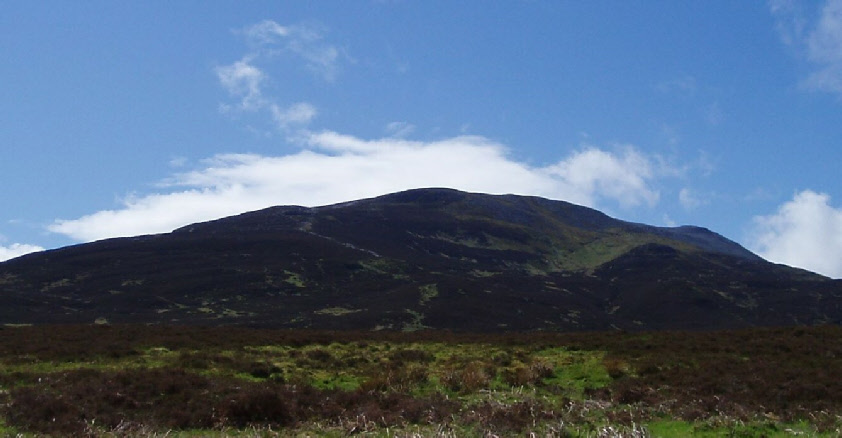© Copyright Dominic Rhodes 2014-

Schiehallion, seen from the east.
Meaning -
Summit Location -
Height -
Munro Number -
Distance -
Total Ascent -
Time -
Difficulty -
OS Explorer Map -
Climbed -
Weather -
Schiehallion is a popular Munro. Viewed from the west, it has an almost perfectly symmetrical shape, though the usual route of ascent is from Braes of Foss, gaining the east ridge. The relatively high car park (over 300m), good paths and ease of the route finding make this an ideal first Munro. Just remember to check the weather forecast, as always. Schiehallion is particularly renowned for bad weather. As a fairly solitary peak on a good day there’s great views from the top, including Loch Tummel, Loch Rannoch and the Ben Lawers hills.
In the summer of 1774 an experiment was carried out on Schiehallion in order to try
to weigh the world. The view was that if both the gravitational pull of a large object
(such as Schiehallion) and the mass of that object could be calculated then these
figures could be extrapolated to calculate the mass of planet earth. So scientists,
lead by the Astronomer Royal, Nevil Maskelyne, calculated the volume of the mountain
by dividing it into a series of vertical prisms and then calculated its mass by taking
a number of rock samples. The gravitational pull of the mountains was measured by
observing the deflection of a plum-
Despite the less than ideal location for a scientific experiment (particularly one
demanding such accuracy and needing cloudless conditions to enable a good view of
the stars) Maskelyne acquired a full set of measurements after 16 weeks. A mathematician,
Charles Hutton, was charged with making the final calculations to work out how much
smaller the gravitational pull of Schiehallion was compared to earth and could therefore
calculate the mass of our planet. The results suggested the deflection of the plum-
Route
1 -
2 -
3 -
Schiehallion

